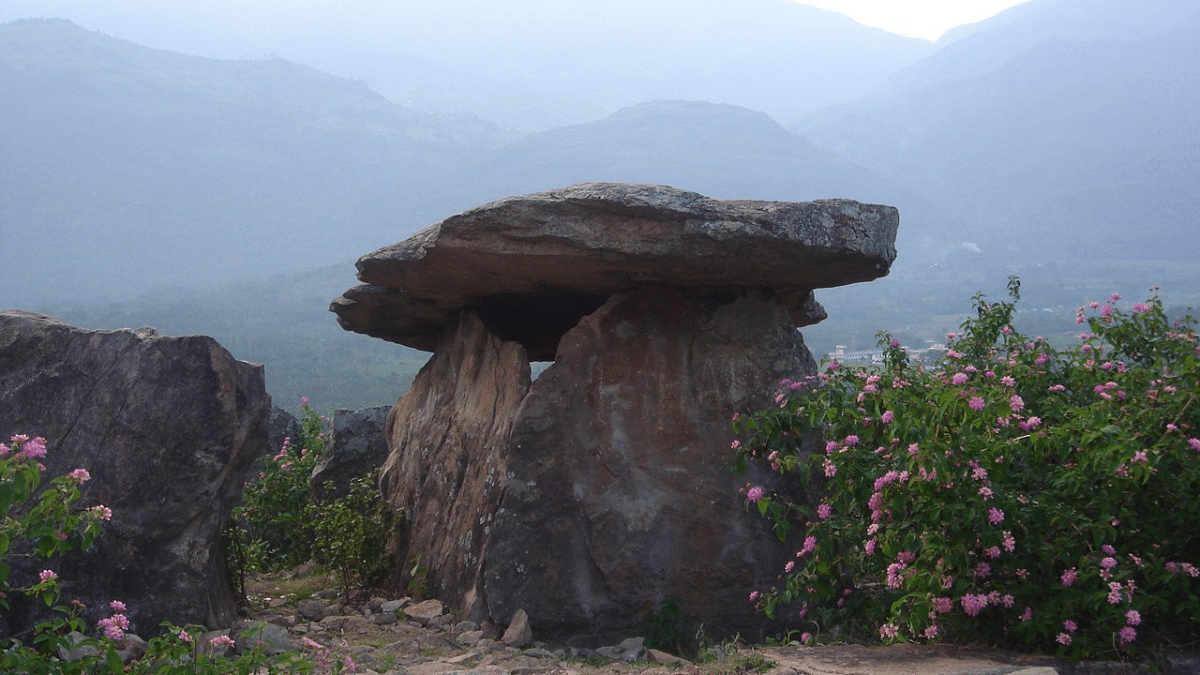Rise and fall of Indian Buddhism was a stranger, more exciting process than we know
Andhra was once as foreign to Buddhism as China was. Its conversion to the religion took many innovations, including worship of the dead.
ANIRUDH KANISETTI
19 January, 2023 09:55 am IST

Representative image of a South Indian dolmen | Wikimedia Commons
Soon after the death of the Buddha in the 5th century BCE, his disciples scattered through the Indian subcontinent, seeking footholds and patronage for their doctrines. In coastal Andhra Pradesh, where builders of megalithic tombs were turning toward agriculture and trade, they found an interesting challenge—and an equally interesting solution. The new Buddhism that resulted would incorporate the veneration of the dead, mother goddesses, and snake deities. These cultural interactions changed Buddhism forever, though they were eventually forgotten.
We all know the pride-invoking narrative: Buddha was a revolutionary, emancipatory leader, Mauryan emperor Ashoka spread Buddhism across India and the rest of the world, and ‘Islamic invasions’ destroyed it. Over the next few editions, the Thinking Medieval column will inform its readers how the rise and fall of Indian Buddhism was a stranger, more exciting process than we could ever imagine.
Nobody in the 5th century BCE could have anticipated that a system of concepts propounded by an acerbic former aristocrat, most active in parts of present-day Uttar Pradesh and Bihar, would evolve into a diverse religion followed by hundreds of millions. Its power and popularity grew in stages, driven by brilliant monks, mendicants, nuns, traders, and the occasional chief. Buddhism was intertwined with social and political trends toward urbanisation; it reinvented itself constantly in response to changing milieus, shattering into kaleidoscopes of competing sects and doctrines.
The megalithic world
In the Deccan and various parts of South India today, ancient megalithic burials, dated roughly from 1200 BCE to 400 CE, are not uncommon. One sees dolmens—a large horizontal sheet of rock balanced on two vertical sheets—in the Bannerghatta National Park near Bengaluru. A great necropolis still stands at Hire Benakal near Hampi, now at a deadly risk due to mining and thievery.
More:
https://theprint.in/opinion/rise-and-fall-of-indian-buddhism-was-a-stranger-more-exciting-process-than-we-know/1321644/
